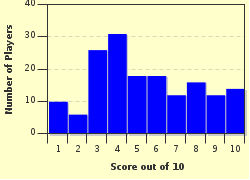Quiz Answer Key and Fun Facts
1. Philip K. Dick was born a twin. His twin sister, Jane, died a few weeks after birth. This fact, and the suggestion of neglect on the part of his mother, haunted him for the rest of his life. Which post-apocalyptic novel features a character, Edie Keller, who has a conjoined twin alive inside her body?
2. In this PKD novel, time moves backwards for Joe Chip. His former boss, Glen Runciter, murdered in an ambush on Luna and now kept in half-life at the clinic of Dr. Vogelsang, seems to be desperately trying to contact him from beyond the grave. Use strictly as directed. Which novel is it?
3. In "The Three Stigmata of Palmer Eldritch", Martian colonists stave off monotony by taking the drug, 'Can-D' and 'translating' themselves into 'Perky Pat' dolls and living out fantasy lives in customized 'layouts'. When Palmer Eldritch returns from his long travels in space, he brings with him a new drug that promises much more than Can-D can offer. What's the name of the new drug?
4. Which of the following films isn't based on a PKD short story or novel?
5. Philip K. Dick wrote two collaborative novels, "Deus Irae" and "The Ganymede Takeover". With whom did he, respectively, collaborate?
6. In which novel would you find Heebs, Pares, Manses, Skitzes, Polys, Ob-Coms, Deps and a telepathic Ganymedean slime mold named Lord Running Clam?
7. For which novel did Dick win the Hugo Award in 1963?
8. Which of Dick's novels was published twice under two different titles--the second publication posthumously, with many alterations?
9. The novels "VALIS", "The Divine Invasion" and "The Transmigration of Timothy Archer" can be seen as a loose trilogy in which Dick explores his religious beliefs, conspiracy theories and paranoia. Which novel, published posthumously, is related to the trilogy and was actually an initial rejected draft of "VALIS"?
10. Which of the following isn't a title of one of Dick's non-science fiction novels?
Source: Author
MarcelMule
This quiz was reviewed by FunTrivia editor
agony before going online.
Any errors found in FunTrivia content are routinely corrected through our feedback system.

